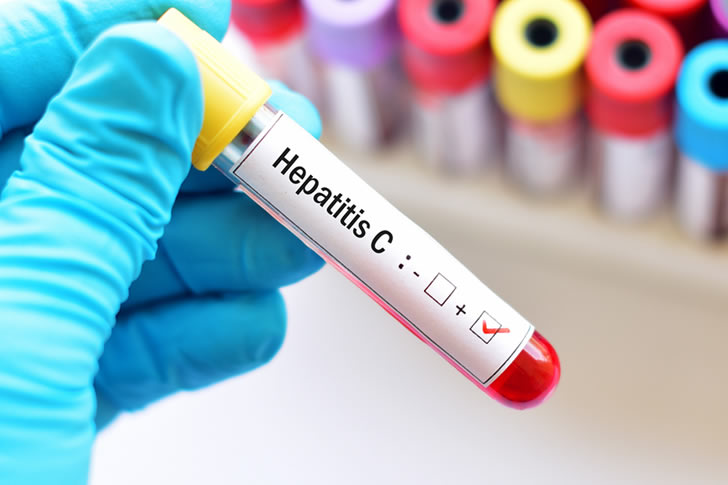Do You Know What Hepatitis C Is?
Hepatitis C is a viral infection that primarily affects the liver. Understanding its signs, symptoms, causes, and treatments is crucial for managing this potentially serious condition.

What is Hepatitis C?
Hepatitis C is caused by the Hepatitis C Virus (HCV), which leads to liver inflammation and can result in severe liver damage if left untreated. According to the World Health Organization (WHO), about 58 million people globally have chronic Hepatitis C, with approximately 1.5 million new infections occurring each year.
Signs and Symptoms
Hepatitis C often remains asymptomatic for many years, making it challenging to diagnose early. However, when symptoms do appear, they can include:
- Fatigue: One of the most common symptoms, affecting daily activities and quality of life.
- Fever: Low-grade fever is often present.
- Jaundice: Yellowing of the skin and eyes due to elevated bilirubin levels.
- Dark Urine: A sign of liver dysfunction.
- Pale Stools: Indicating issues with bile production or flow.
- Abdominal Pain: Particularly in the upper right quadrant, where the liver is located.
- Nausea and Vomiting: Gastrointestinal symptoms are common.
- Loss of Appetite: Leading to weight loss.
- Joint Pain: Can occur in some individuals.
- Itchy Skin: A less common but possible symptom.
Common Causes
Hepatitis C is primarily spread through blood-to-blood contact. Common causes include:
- Injection Drug Use: Sharing needles or other equipment used to inject drugs is the most common route of transmission in many countries.
- Blood Transfusions: Although now rare in developed countries due to rigorous screening, this was a significant cause before 1992.
- Needlestick Injuries: Healthcare workers are at risk if they accidentally get pricked by needles that have infected blood.
- Unsterile Medical Equipment: Inadequate sterilization of medical or dental equipment.
- Mother-to-Child Transmission: Can occur during childbirth.
- Sexual Contact: Less common, but possible, particularly among individuals with multiple partners or those with sexually transmitted infections.
- Tattoos and Piercings: Using unsterile equipment can transmit the virus.
Diagnosis
Diagnosing Hepatitis C involves several steps:
- Antibody Test: The initial screening test checks for antibodies against HCV. A positive result indicates past or present infection.
- HCV RNA Test: Confirms active infection by detecting the virus’s genetic material in the blood.
- Genotype Test: Determines the specific strain of HCV, which helps guide treatment decisions.
- Liver Function Tests: Assess liver health and detect damage.
- Liver Biopsy or Imaging: Sometimes used to evaluate the extent of liver damage.
Treatment Options
Treatment for Hepatitis C has advanced significantly, with highly effective options available:
- Direct-Acting Antivirals (DAAs): These medications are the cornerstone of Hepatitis C treatment. They target specific steps in the HCV life cycle to stop the virus from replicating. Common DAAs include sofosbuvir, ledipasvir, velpatasvir, and glecaprevir.
- Effectiveness: DAAs can cure over 95% of patients, usually within 8-12 weeks of treatment.
- Side Effects: Generally mild, including headache, fatigue, and nausea.
Interferons and Ribavirin: Previously the mainstay of treatment, these are now rarely used due to lower effectiveness and more severe side effects compared to DAAs. - Liver Transplant: In cases of severe liver damage or liver failure, a transplant may be necessary. This does not cure the infection, and antiviral treatment is usually required after the transplant.
- Supportive Care: Includes regular monitoring, vaccination against Hepatitis A and B, and lifestyle modifications such as avoiding alcohol and maintaining a healthy diet to protect liver health.
Prevention Strategies
Preventing Hepatitis C involves reducing risk factors and promoting safe practices:
- Safe Injection Practices: Avoid sharing needles and ensure the use of sterile equipment.
- Safe Blood Transfusions: Ensuring blood is screened for HCV.
- Safe Sex Practices: Using condoms and reducing the number of sexual partners can lower the risk.
- Healthcare Safety: Proper sterilization of medical and dental equipment.
- Public Awareness: Education about the modes of transmission and preventive measures.
Living with Hepatitis C
For those diagnosed with Hepatitis C, managing the condition involves:
- Regular Medical Check-Ups: Continuous monitoring of liver function and viral load.
- Healthy Lifestyle: Maintaining a balanced diet, exercising, and avoiding alcohol and drugs that can further harm the liver.
- Mental Health Support: Dealing with a chronic illness can be stressful; support groups and counseling can be beneficial.
- Adherence to Treatment: Completing the full course of antiviral therapy to ensure the best chance of a cure.
Research and Future Directions
Ongoing research is focused on:
- Vaccine Development: Currently, there is no vaccine for Hepatitis C, but research is ongoing.
- Improved Treatments: Developing even more effective and shorter-duration antiviral therapies.
- Public Health Initiatives: Enhancing screening and awareness programs to reduce the global burden of Hepatitis C.
Conclusion
Hepatitis C is a significant global health issue, but with modern treatments, it is highly manageable and often curable. Understanding the signs, causes, and treatment options can lead to early detection and successful management of the disease. Seniors and at-risk individuals should prioritize regular screenings and consult healthcare professionals if they experience any symptoms or believe they might have been exposed to the virus. Through education, prevention, and advanced medical care, the impact of Hepatitis C can be significantly reduced.







Recent Comments